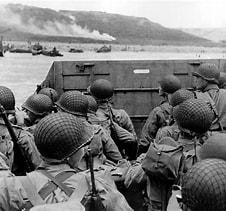BRIEF HISTORY OF THE AMERICAN LEGION - Part 2
(Click on the picture in the left corner to see the whole article)
II. St. Louis Caucus
“A representative democracy in a federal republic” was the plan adopted by the Paris caucus for the formation of The American Legion. Advance committees of two members from each state met on May 6, 1919, in St. Louis, Missouri, to prepare for a general caucus from May 8 to 10, 1919, in the same location. This St. Louis caucus, attended by some 1,100 delegates, produced the blueprint of The American Legion, approved the principles set forth at the Paris caucus, adopted a tentative constitution, and created the machinery to provide for a Permanent organization.
It was at the St. Louis caucus that the now-famous Preamble to the Constitution of The American Legion was put into final form. A shot preamble had been written in Paris by a sub-committee consisting of Frank White, William H. Curtiss, and Redmond C. Stewart. In St. Louis, the now immortal Preamble was conceived by the fertile minds of John C. Greenway of Arizona, Hamilton Fish of New York, and George N. Davis of Delaware.
Organizational work proceeded rapidly after the St. Louis caucus. Temporary offices were opened in New York City. On September 16, 1919, the United States Congress chartered The American Legion, thus giving official sanction to the Constitution adopted in Paris.
The charter convention of The American Legion met November 10-12, 1919, in Minneapolis, Minnesota. The rapid pace with which The American Legion was building its organization was evident in the presence of many delegates still in the uniforms of the armed forces. The Minneapolis convention of 1919 approved the acts of the temporary organization and adopted a permanent structure. The first American Legion National Convention parade-which was to set the pace for what has become the utmost in pageantry, color, and martial music, was on the first anniversary of Armistice Day, November 11, 1919. Included in the line of march were 648 delegates representing the infant organization’s membership of 648,000.
A somber note was injected at this first convention with the arrival of news that four Legionnaires of a newly formed post at Centralia, Washing, while marching in the Armistice Day parade in their home city, were shot in cold blood by members of the Industrial Workers, of the World, a radical group incited by propaganda based on class hatred. Thus did The American Legion receive its first challenge by un-American elements, some of which to this day classify the Legion as their greatest enemy.
Franklin D’Olier of Pennsylvania became the first National Commander, and Lemuel Bolles of Washington, the first National Adjutant. D’Olier later became president of the Prudential Insurance Company and performed several non-salaried tasks for his country during World War II.
Representatives of five cities-Detroit, Indianapolis, Kansas City, Minneapolis, and Washington, D.C.-vied to gain the new organization’s permanent national headquarters. Indianapolis won, and the national headquarters of The American Legion was moved in late 1919 from their temporary location in New York City to the Hoosier capital.


Comments